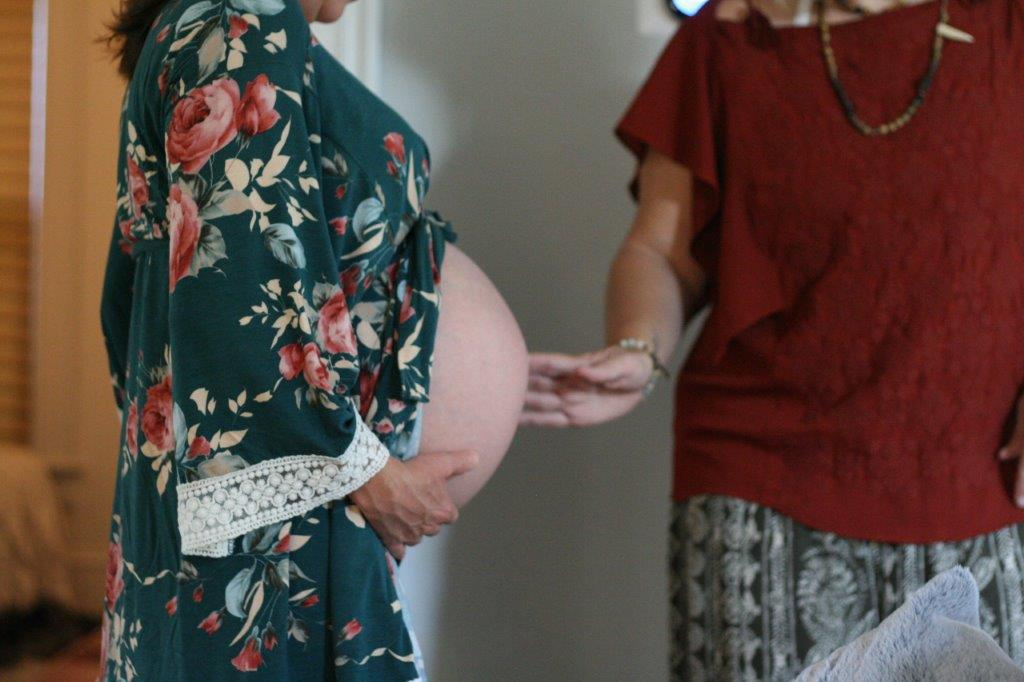
Prodromal labor is the medical term for ‘false labor’ but that doesn’t mean it’s not real labor! Ask any woman who has experienced this and she will surely tell you it looks and feels like the real thing! In fact false labor is a bad term for it, because it’s real labor but for one of a variety of reasons, it’s not progressing. In terms of pain and contractions, prodromal labor presents like actual labor but then it stops for the day and starts again the next day.
Prodromal labor often starts and stops at the same time each day or at regular intervals, and many moms will call their birth team or going to the hospital thinking it is real labor. Prodromal labor can last days, weeks or even a month or more, often starting and stopping at the same time each day (or night).
prodromal labor usually presents as “contractions that range from mild to strong and may be regular or irregular in their frequency and duration. These contractions might come and go, but they’re usually less than every 5 minutes and do not become more frequent. There can be pelvic/back pressure, abdominal tightening, vaginal discharge and scant spotting, but no heavy bleeding.” The main thing about prodromal labor to remember is that it consists of contractions that are not progressing into more active labor or dilating your cervix.
Prodromal labor or Braxton Hicks?
There is often a misconception that prodromal labor is the same as having Braxton Hicks contractions, but there is a definite difference. Braxton Hicks contractions, or “practice contractions” are experienced by most women at some point during pregnancy. These contractions can be very tight and uncomfortable but are usually not regular or too intense. They can last long periods of time or pick up in intensity for some women. Hydration, eating and relaxation can often relieve Braxton Hicks contractions while it may not change prodromal labor.
Another difference is that Braxton Hicks contractions are often not regular or intense, while prodromal labor can follow a very regular contraction pattern and vary in intensity.
What Causes Prodromal Labor?
There seem to be several potential causes of prodromal labor, but no official cause or consensus in the obstetric community. Most sources agree that prodromal labor is the body’s way of preparing for real labor. Contributing factors may be:
- The baby’s position in the womb–prodromal labor may be the body’s way of trying to move the baby into the correct position for labor. During contractions, the uterus tries to move the baby with contractions for several hours and eventually stops if it doesn’t work, only to start again after resting.
- Pelvic or uterine abnormality–some women seem to be more prone to prodromal labor than others, uterine abnormalities or pelvic alignment may be factors
- Emotions or anxiety– Another theory is that prodromal labor is more likely in women who are anxious or concerned about their birth or who are experiencing a lot of stress.
- More than three pregnancies– There are definitely exceptions, but prodromal labor seems to be more common in moms who have had at least three children
Prodromal labor can be really exhausting to deal with, both emotionally and physically. It’s certainly no picnic to experience hours or days of painful contractions just to have them abruptly stop or to be told by your provider that you’re not in “real” labor. Luckily, there are a few different ways of dealing with this kind of labor—and most all of them are related to relaxation. Stephanie Tillman, CNM, a certified nurse-midwife in Chicago who blogs at Feminist Midwife, explains, “For many, a medical intervention such as therapeutic rest—taking a medicine to allow sleep for a few hours—can be enough to rest the body and relax the mind to start a new day without frustration.” (Speak to your doctor about options.) “For others,” Tillman says, “hydration and hydrotherapy—baths, showers—may alleviate symptoms.” If you have prodromal labor, anything that can help you rest and relax is great, like massage, acupuncture, yoga, position changes, or meditation. You and your partner can practice the breathing or visualizations you learned in your childbirth classes, as well. Distraction, such as cleaning, organizing, cooking, shopping, or otherwise getting ready for baby’s arrival, can also be a great tool. Tillman adds that sometimes being active can help, too: “Activity such as walking or stairs may ultimately increase the strength and frequency of contractions enough to start the process of cervical change.” Swimming, dancing or other kinds of movement you enjoy are good for both movement and distraction.


